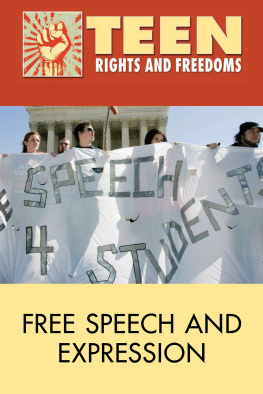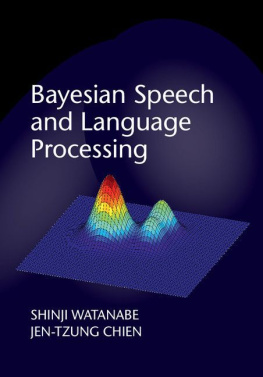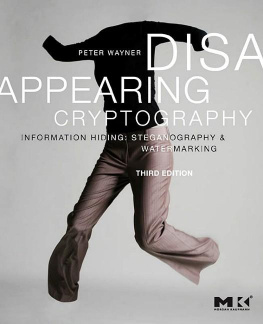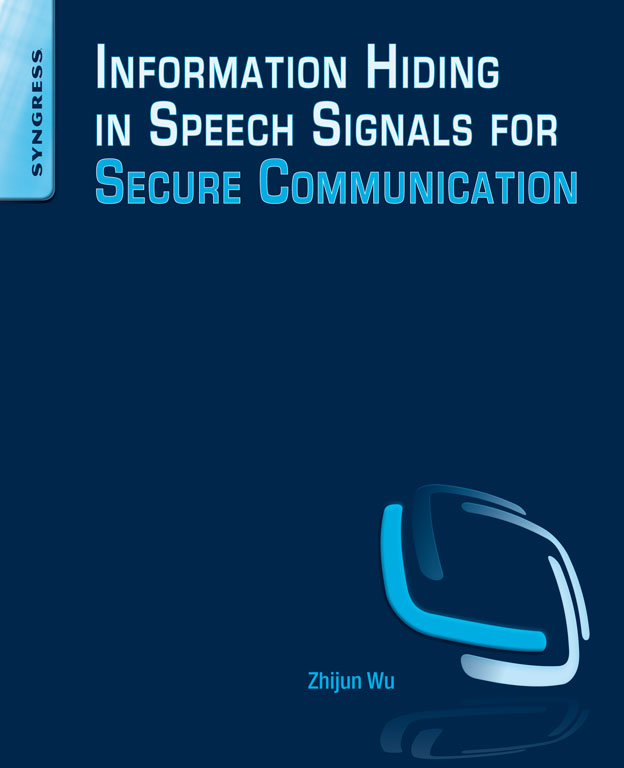Information Hiding in Speech Signals for Secure Communication
Zhijun Wu
Table of Contents
Copyright Page
Syngress is an imprint of Elsevier
The Boulevard, Langford Lane, Kidlington, Oxford OX5 1GB, UK
225 Wyman Street, Waltham, MA 02451, USA
First edition 2015
Copyright 2015 Science Press. Published by Elsevier Inc. All rights reserved
No part of this publication may be reproduced, stored in a retrieval system or transmitted in any form or by any means electronic, mechanical, photocopying, recording or otherwise without the prior written permission of the publisher
Permissions may be sought directly from Elseviers Science & Technology Rights.
Department in Oxford, UK: phone (+44) (0) 1865 843830; fax (+44) (0) 1865 853333; email: , and selecting Obtaining permission to use Elsevier material
Notice
No responsibility is assumed by the publisher for any injury and/or damage to persons or property as a matter of products liability, negligence or otherwise, or from any use or operation of any methods, products, instructions or ideas contained in the material herein. Because of rapid advances in the medical sciences, in particular, independent verification of diagnoses and drug dosages should be made
British Library Cataloguing in Publication Data
A catalogue record for this book is available from the British Library
Library of Congress Cataloging-in-Publication Data
A catalog record for this book is availabe from the Library of Congress
ISBN13: 978-0-12-801328-1
For information on all Syngress publications visit our website at http://store.elsevier.com/
Printed and bound in the US
14 15 16 17 18 10 9 8 7 6 5 4 3 2 1

Preface
In the information communication field, speech communication via network becomes an important way to transfer information. With the development of information technology, speech communication is widely used for military, diplomatic, and economic purposes as well as in cultural life and scientific research. Therefore, speech secure communication and the security of communication information have attracted more and more attention. The rapid growth of the Internet as both an individual and business communication channel has created a growing demand for security and privacy in the network communication channel. Security and privacy are essential for individual communication to continue and for e-commerce to thrive in cyberspace.
Any type of multimedia datafor example speech, transmitted via networkneeds to be protected from manipulation, forgery, and theft. More sophisticated attacks require that more advanced security technologies be avoided, which have to be optimized for the particular requirements of each application scenario. As a development tendency of information security and a fresh-born technique, information hiding breaks the mentality of traditional cryptology. Information hiding technology carefully examines information security from a new perspective. Traditional secure communication approaches cannot satisfy current security requirements, and the garbled bits are likely to attract attention, or even encounter attacks from others. It is urgent to introduce a new mechanism for secure communication; thus the author undertakes it as his task to investigate a more secure communication, based on information hiding technology, which has many distinguishing characteristics. The most important characteristic is that there are univocal and continuous plain text speech signals on the communication line, so the secure communication will be more covert and safe.
Objectives
This book intends to develop the theory and system of real-time secure speech communication over a network based on information hiding technology, and to provide an overview of the research area of information hiding in secure communication. In the book, the author attempts to break the massive subject into comprehensible parts and to build, piece by piece, a development of information hiding technology in secure communication. The book emphasizes the fundamentals of algorithms and approaches concerning the technology and architecture of a secure communication field, providing a detailed discussion of leading-edge topics such as filter similarity and linear predictive coding (LPC) parameters substitution.
Organization of the Book
This book introduces several methods to hide secret speech information in different types of digital speech coding standards. In the past 10 years, the continued advancement and exponential increase of network processing ability have enhanced the efficiency and scope of speech communication over the network. Therefore, the author summarizes his years of research achievements in the speech information hiding realm to form this book, including a mathematical model for information hiding, the scheme of speech secure communication, an ABS-based information hiding algorithm, and an implemented speech secure communication system, which are organized into different sections in accordance with the security situation of the network. This book includes nine chapters, which introduce speech information hiding algorithms and techniques (embedding and extracting) capable of withstanding the evolved forms of attacks.
The four parts of this book are as follows:
I. Introduction , includes . This book begins with an introductory chapter, where the approaches of secure communication and their realization are discussed in general terms. This chapter ends with an overview of speech coding standards. This part provides a source of motivation for interested readers to wade through the rich history of the subject. The concept and algorithms involved in this part are explained in details in subsequent chapters.
II. Theory , consists of . This part proposes a mathematical model, and embedding and extracting algorithms of secure communication based on information hiding. The design of a speech information hiding model and algorithm for secure communication focuses on security, hiding capacity, and speech quality. The model and algorithm may help readers to develop a deep understanding of what information-hiding-based secure communication is all about.
III. Approaches , consists of . This part presents a detailed embedding secret speech coded in MELP 2.4 K, with the secret speech coded in accordance with five important families of the speech coding standard, such as G.721, G.728, G.729, and GSM, which are used in Voice over Internet Protocol (VoIP) or Public Switched Telephone Network (PSTN). Next is the introduction of the process of extracting secret speech coded in MELP 2.4 K in the G.721, G.728, G.729, and GSM standards. The procedure of the realization of secure communication based on specific speech coding standards is developed.
IV. Realization , consists of . This part gives two applications of secure communication based on the technology of information hiding. Each chapter sets up one example to show how to implement secure communication over VoIP and PSTN by using the information-hiding-based model and algorithm individually.




















